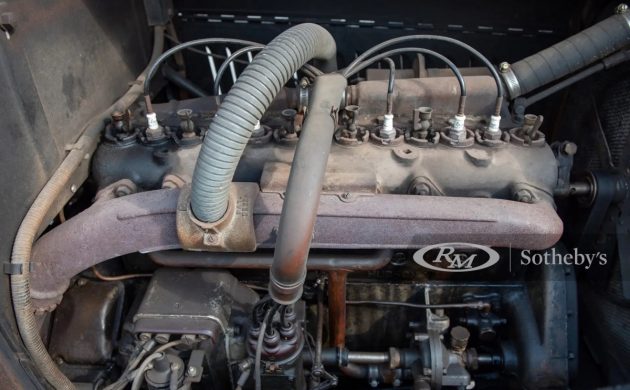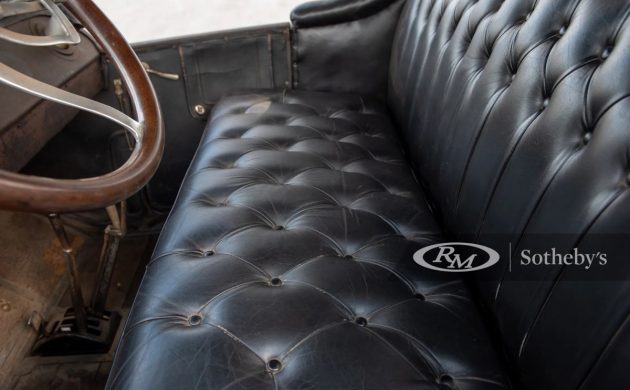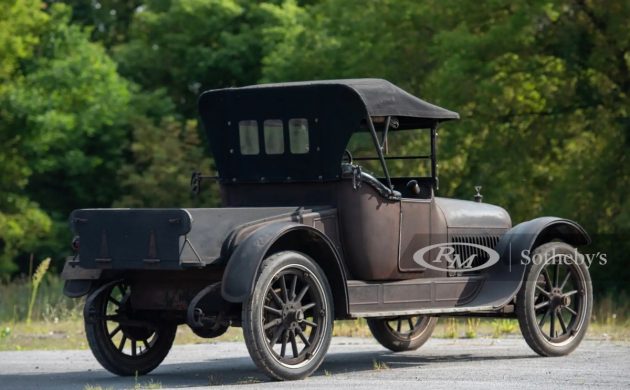The first few decades of the 20th century were an exciting time in the motoring world, especially in America. While the story we learn in school tends to focus on the ubiquitous Ford Model T, there were a host of other manufacturers. Each was at the frontier of automotive science, if for no other reason than there was so much left to learn. Among those that would stand the test of time was Hudson. This 1915 Hudson Model Six-40 is being offered by RM Sotheby’s at the auction being held in Hershey, Pennsylvania, from December 1 to 8. More details are to be found on the auctioneer’s website, here at RM Sotheby’s.
The Six-40, and its big brother, the Six-54, were introduced in 1914 and marked the beginning of Hudson’s long-running association with the inline-six. Coming only one year before the debut of the vaunted Super Six, these cars offered significant performance for their time, being rated by Hudson at 40 and 54 horsepower, respectively. Paired with a car that, in the case of the Six-40, weighed 2,900 pounds (and this for the larger phaeton), this would have given a respectable top speed, especially on the roads of the time. Aimed at a higher tax bracket, the Six-40 7-passenger phaeton had a suggested retail price of $1,550. To put it in perspective, this would have been more than double the average annual household income of $687.
This raises the question as to why such an expensive car, four times the cost of a Model T runabout, would be used as a pickup. Perhaps it’s a matter of when the conversion took place; while this Hudson may have been considered an older vehicle by the mid-20s, the difference between 1915 and 1925 seems much less when viewed from our 21st-century perspective. Alterations aside, the car is beautifully preserved, its bodywork having been done by Fisher prior to their purchase by GM after the Great War. Like many cars of its era, the controls and conventions seem a bit alien to modern eyes, with the throttle located on the inner quadrant of the steering wheel and the gasoline fill positioned directly in front of the passenger seat.
Aside from collecting and preserving automotive history, what might one do with a car of this vintage? There’s parade duty, of course, and advertising. Truthfully, there’s probably not going to be another one at your local cars and coffee. But you could also race it– The Great Race is weighted by the age of the vehicle, and 1915 would likely give a significant age factor. Competing in a long-distance precision pace race in an open vehicle 106 years young might be the definition of adventure.







I like very old classic cars like the Hudson Six-40.
Is it a car? It looks more like a pick-up.
What a tremendous automobile! The brass era cars have a deep soft spot in my heart and this is simply a wonderful example. Make me miss my Model T roadster pickup!!
The older the better. What’s going to happen to all these examples when the older generation is gone? Will younger guys step up and see them for what they are: engineering and innovative marvels, the high-tech of their day (like trains and ‘safety’ bicycles were before cars), designed and built by people who often-times head little to no formal education. Invented things as they went along, asked themselves ‘what if we made it like this…..’, dreamt it / did it. Would hate to see the pedestrian pre-war cars disappear into oblivion. They represent American ingenuity in its finest hour.
A lot of cars when they were old were converted to trucks ; the Depression made a lot of people make do with what they had , and a 15 year old car could be had for next to nothing